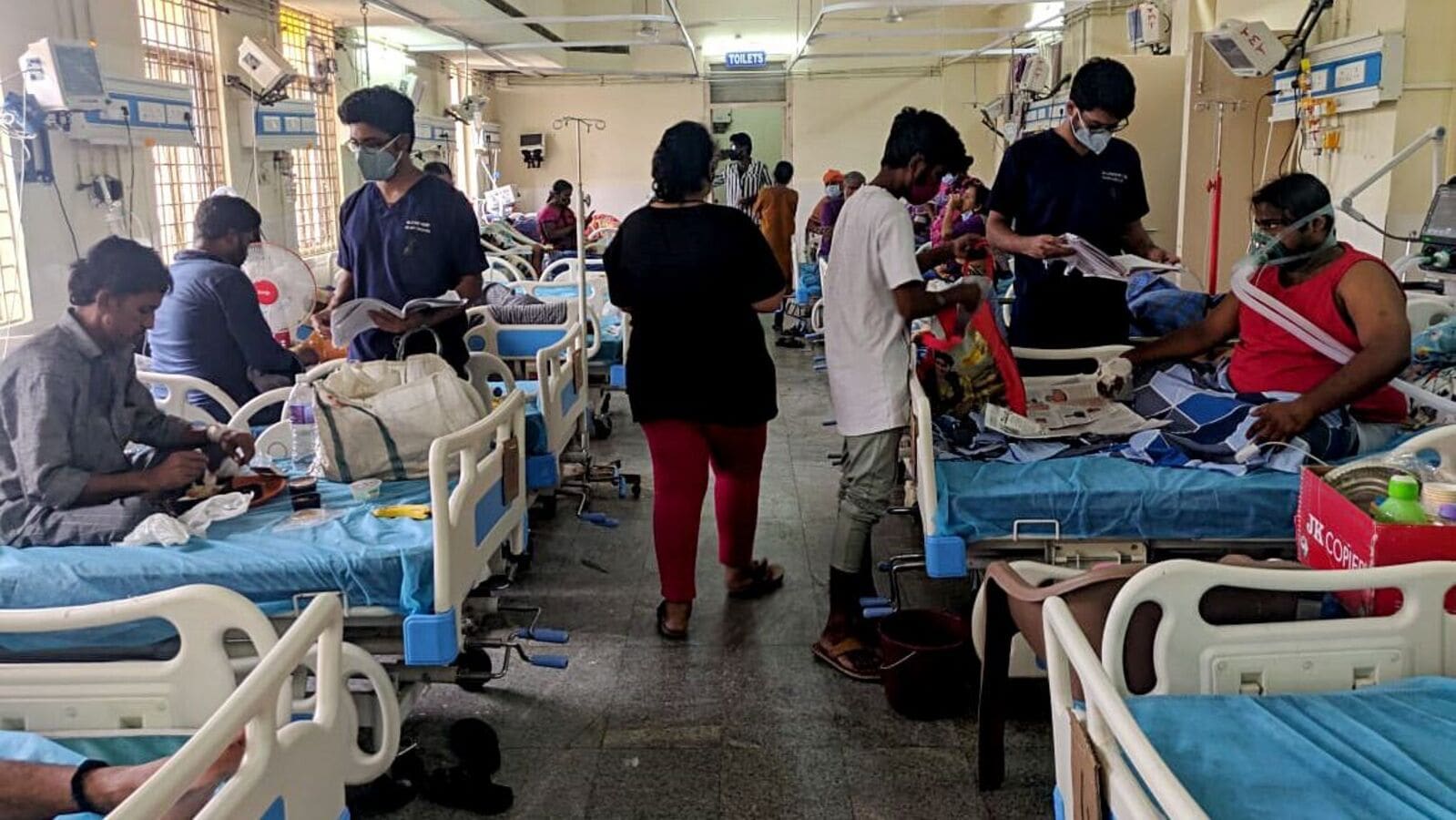We trust doctors to be up to date with the latest in medical science. So it’s concerning that our future medical professionals aren’t being trained sufficiently or consistently on a very real threat to public health: climate change.
With doctors and students alike raising the alarm, new initiatives such as the European Network on Climate & Health Education (ENCHE), are springing up to better align medical practice with the climate crisis. But broad structural changes need to follow.
ENCHE was launched last week by a group of 25 medical schools from 12 European countries. Led by the University of Glasgow, the network will be the first regional hub of the Global Consortium on Climate and Health Education (GCCHE) at Columbia University in New York.
Members of ENCHE have pledged to embed climate education into their training of more than 10,000 medical students alongside campaigning for structural changes higher up, such embedding such topics into national curricula, continuing professional education and exam boards.
The intersection of public health and the climate crisis runs deep. Rising global temperatures not only threaten what the World Health Organization calls the “essential ingredients of good health”— clean air, safe drinking water, nutritious food and safe shelter—they’re also having an impact on cardio-respiratory and infectious diseases; mental health and pregnancy; and paediatric and geriatric care.
For instance, heat worsens common mood disorders such as anxiety and depression as well as rarer conditions like schizophrenia. Medications commonly used to treat them can also make hot weather harder to bear by affecting a patient’s thermoregulation and fluid levels.
Exposure to high ambient temperatures has also been linked to poor health outcomes for mothers and babies, such as increased incidence of miscarriages, stillbirths, preterm births, congenital defects, gestational diabetes, gestational hypertension and pre-eclampsia.
Changing climates mean vectors and their associated diseases are thriving in new places. France, Italy and Spain have dengue cases for the first time and Lyme disease is on the rise.
Health professionals are on the front line of these impacts and are key to adapting to the realities of global heating. Attempts to integrate climate change into medical training have so far been applied unevenly.
In some settings, for example, there might be one or two passionate faculty members passing knowledge on via an extra climate module. Other schools, meanwhile, aren’t offering anything.
Climate change wasn’t seen as a health crisis when many educators and practitioners were in training, Cecilia Sorensen, GCCHE director, explained. There are systemic barriers too.
Though there’s been a rapid expansion of research over the past few years into climate and health links, these new understandings aren’t yet widespread among health professionals.
Couple that with the explosion in new medical technologies, and you get both a very complicated time to be a doctor and a lot of difficulty getting new topics into curricula.
ENCHE’s aim is to prepare future doctors for new medical conditions which may have previously been regionally specific such as heat stroke and dengue. But getting national bodies to make climate education for doctors mandatory will be key to real progress.
Students aren’t known for prioritizing knowledge that they’re not going to be tested on—hence it’s important that the topic is integrated into medical exams.
We also can’t wait decades for climate-trained doctors to work their way up to senior roles, so reaching out to working professionals will also be critical. Still, getting leading medical schools to commit to incorporating climate change into their curricula is an enormous step forward.
At the same time, the health sector also contributes to the climate crisis—approximately 5% of greenhouse gas emissions can be attributed to health care, twice as much as aviation.
The UK’s Royal College of Physicians published a green toolkit in July, aimed at advising doctors how to be more sustainable. Tips include reducing unnecessary prescribing and blood testing where appropriate and identifying patients most at risk of climate impacts.
Even simply changing the type of asthma inhaler— responsible for 3% of the National Health Service’s carbon footprint—can significantly reduce emissions.
Our health systems are under pressure, but the climate crisis threatens to make things much worse. The training and practice of health specialists around the globe must be updated to reflect the realities of the modern age. Human well-being counts on it. ©bloomberg
